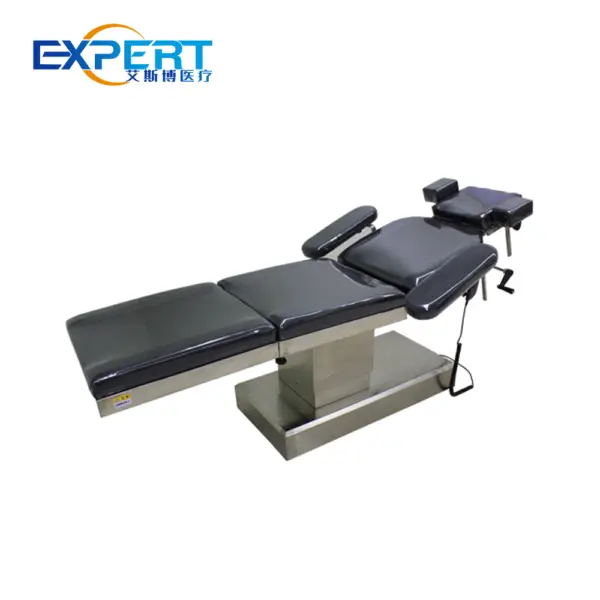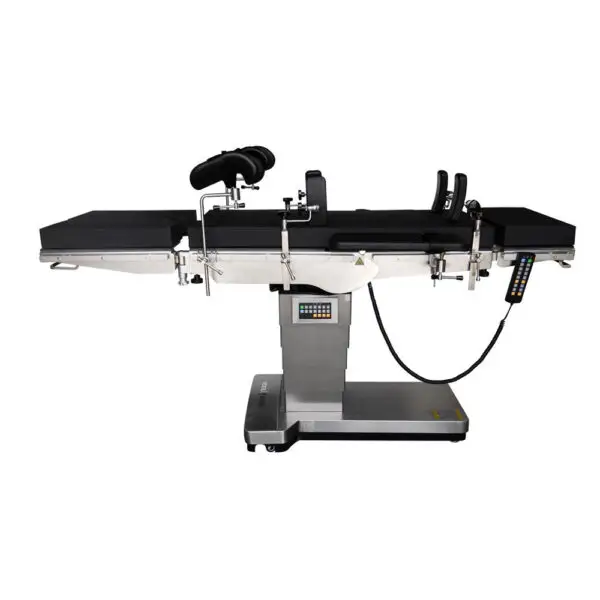عنوان
304 شارع الكاردينال الشمالي
مركز دورتشستر ، ماساتشوستس 02124
ساعات العمل
من الاثنين إلى الجمعة: 7 صباحًا - 7 مساءً
عطلة نهاية الأسبوع: 10 صباحًا - 5 مساءً
مرحباً بكم في مدونتي!
قبل أن نتعمق في المحتوى، إذا كنت مهتمًا بمنتجاتنا أو لديك أي أسئلة، فلا تتردد في زيارة موقعنا اتصل بنا صفحة على موقعنا الإلكتروني. فريقنا جاهز لمساعدتك في أي استفسارات أو طلبات أو أي دعم قد تحتاجه.
لنبدأ رحلتنا معًا. آمل أن تجدوا هذا المحتوى ثريًا وجذابًا وقيّمًا.

لطالما كانت طاولات العمليات جزءًا أساسيًا من العمليات الجراحية، إذ توفر منصةً ثابتةً وقابلةً للتكيف للمرضى أثناء العمليات. في السنوات الأخيرة، أحدثت التطورات في التكنولوجيا الطبية ثورةً في تصميم ووظائف طاولات العمليات، مما حسّن النتائج الجراحية وعزز سلامة المرضى. تتناول هذه المدونة الدور المتطور لطاولات غرف العمليات في الجراحة الحديثة، مسلطةً الضوء على ميزاتها الرئيسية وفوائدها وآفاقها المستقبلية.
Operating tables have undergone significant evolution since their inception in ancient times. From rudimentary wooden platforms to sophisticated, electronically controlled systems, the design and functionality of operating room tables have evolved to meet the demands of contemporary surgical practices. Modern operating room tables boast various features such as adjustable height, tilt, and lateral tilt capabilities, allowing surgeons to optimize patient positioning for different procedures.
Operating tables play a crucial role in ensuring the success of surgical interventions by providing a stable and ergonomic platform for both patients and medical personnel. Some key features and advantages of modern operating room tables include:
To illustrate the practical significance of operating tables in modern surgery, let’s explore some real-world case studies:

| ميزة | Basic Operating Table | Advanced Operating Table |
|---|---|---|
| تعديل الارتفاع | محدود | شاسِع |
| وظيفة الميل | أساسي | Multi-Axis |
| توافق التصوير | لا أحد | MRI/CT Integration |
| ميزات السلامة | Standard Side Rails | Pressure-Relieving Mattress, Straps |
| المرفقات المتخصصة | N/A | Orthopedic Traction, Cardiovascular Positioners |
جداول التشغيل represent a cornerstone of modern surgical practice, providing essential support and functionality for a diverse range of procedures. As technology continues to advance, operating room tables will likely evolve further, incorporating innovative features to enhance surgical outcomes and patient care. By understanding the role and capabilities of operating room tables, healthcare professionals can optimize their use in various surgical settings, ultimately benefiting both patients and surgical teams.
س: هل طاولات التشغيل compatible with all surgical procedures?
A: While operating tables are versatile and adaptable, some specialized procedures may require specific table configurations or attachments for optimal positioning and support.
Q: How often are طاولات التشغيل replaced or upgraded in healthcare facilities?
A: The frequency of operating table replacement or upgrade varies depending on factors such as technological advancements, budgetary considerations, and equipment maintenance. In general, healthcare facilities aim to ensure that their operating room tables remain up-to-date with current standards and capabilities.
